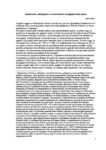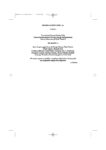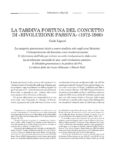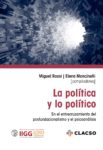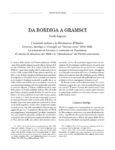International Gramsci Society Archive
The IGS Archive is a platform for members of the International Gramsci Society to share their research papers and publications, via free access, facilitating the exchange of ideas and information across the globe.
Spostamenti, catalogazione e conservazione dei Quaderni del carcere (second draft – uploaded on 18 Jan. 2024)
The essay reconstructs some events which, even though not directly concerning either the content or the composition of Antonio Gramsci’s Notebooks, crucially marked their existence. They may be included in four main groups: (1) the January 1934 shipment of the notebooks Gramsci had had in Turi prison; (2) the numbering and cataloguing of Gramsci’s notebooks made by Tatiana Schucht few weeks after Gramsci’s death; (3) their shipment to Moscow, between 1937 and 1938, their preservation in Soviet Union and their return to Rome after the end of the Second World War; (4) the differences in the ways Gramsci’s Notebooks were counted. The proposed reconstruction will stress the importance of often underestimated data: the presence of a sketchbook among those normally referred to as notebooks; the fact that Tatiana herself, while numbering thirty-one of Gramsci’s notebooks, did not number two large-format notebooks, which can be assumed to have remained separate from the others for a long time; the existence of two other large-format notebooks on which Tatiana began to prepare, without completing them, a catalogue of the topics and a complete transcription of the notebooks written by Gramsci. It will be clear that the hypotheses put forward by those who supported the thesis of the subtraction of one or more notebooks lack solid foundations and are unnecessary.
Sentieri gramsciani
La tardiva fortuna del concetto di “rivoluzione passiva” (1972-1980)
La categoria gramsciana iniziò a essere studiata solo negli anni Settanta. L’interpretazione del fascismo come modernizzazione. Il riformismo dall’alto per evitare un esito rivoluzionario della crisi. Il bisogno di una «anti-rivoluzione passiva». Il dibattito gramsciano e la politica del Pci. Le letture di Louis Althusser e Stuart Hall.
Autonomía y acotación de lo político. Una reflexión actual a partir de Antonio Gramsci y Carl Schmitt
Gramsci y la cuestión militar argentina. Apuntes críticos para pensar la violencia estatal
¿Por qué Gramsci?
La reserva liberal en la teoría de la hegemonía
Lo político y la derrota. Un contrapunto entre Antonio Gramsci y Carl Schmitt (fragmento introducción)
Gramsci e i Consigli nel “biennio rosso” 1919-1920
La teorizzazione gramsciano dei Consigli di fabbrica è estremamente peculiare e si distingue sia dalla teoria (e dalla pratica) dei Soviet russi, sia dalla visione che dei Consigli ebbero altri politici e teorici italiani. In Italia le tesi di Gramsci e dell’Ordine Nuovo furono contrastate da Bordiga come da Serrati, come da Tasca (differenziatosi dal resto del gruppo dell’Ordine Nuovo). L’articolo ricostruisce la visione gramsciana dei Consigli in rapporto con le lotte del 1919-1920 così come venne sviluppandosi sulle pagine del settimanale “Ordine Nuovo”: un nuovo tipo di democrazia, anti-parlamentare, che doveva costituire la base di un nuovo Stato proletario, caratterizzato dalla partecipazione democratica dei lavoratori a partire dalla fabbrica e dai luoghi di lavoro e produzione, sulla scia di alcune osservazioni di Marx, dallo scritto “Sulla questione ebraica” a quello sulla Comune di Parigi.
Da Bordiga a Gramsci
I socialisti italiani e la Rivoluzione d’Ottobre. Gramsci, Bordiga e i Consigli nel “biennio rosso” 1919-1920. La scissione di Livorno e i contrasti con il Comintern. Il cambio di direzione alla testa del Partito, con la nomina di Gramsci a segretario, del 1924, e la “rifondazione” del Partito comunista nel Congresso di Lione del 1926.

